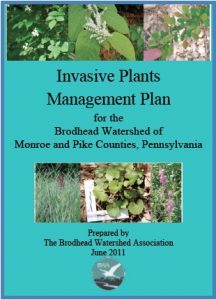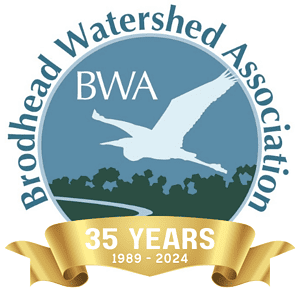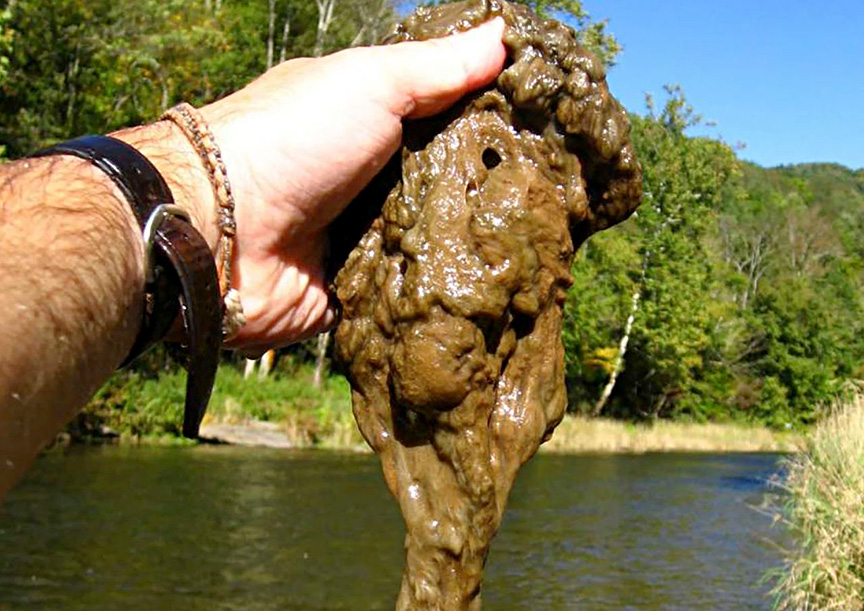Invasive Plants
BRODHEAD WATERSHED
Invasive Species Management Plan

2011, Funded by the PA Department of Conservation and Natural Resources
CONTENTS AND EXECUTIVE SUMMARY
CHAPTER 1: THE BRODHEAD WATERSHED AND INVASIVE PLANTS
CHAPTER 2: MANAGING INVASIVE PLANT SPECIES
CHAPTER 3: PRIORITY INVASIVE PLANT SPECIES
APPENDIX: DEMONSTRATION PROJECTS
COMMON RIPARIAN INVASIVE PLANTS AND NATIVE REPLACEMENTS |
About the Project:
– Read the REPORT ON PHASE I of the project
PHASE I
In Phase I project, riparian areas along the 15 mile Cherry Creek and the 12 mile lower Brodhead were surveyed. The Buck Hill Falls area was also surveyed. Property owners in the 21 square mile Cherry Valley and the 28.2 square mile lower Brodhead were contacted and offered the services of Master Gardeners to survey their property. In the following years all other streams in the watershed were walked, and density of invasive plants recorded.
View Maps of the Phase I Findings:
– JAPANESE BARBERRY
– GARLIC MUSTARD
– JAPANESE KNOTWEED
– MULTIFLORA ROSE
– JAPANESE STILTGRASS
– BUSH HONEYSUCKLES
PHASE II
In Phase II of the project invasive plants in the Marshalls Creek corridor. were mapped and the Management Plan was completed.
View Maps of PHASE II Findings from the Marshalls Creek Watershed:
– JAPANESE BARBERRY
– GARLIC MUSTARD
– JAPANESE KNOTWEED
– MULTIFLORA ROSE
– JAPANESE STILTGRASS
– BUSH HONEYSUCKLES
Archive of Invasive Plant of the Month
January – Didymo
March – Spotted lantern fly
April – English ivy – Japanese Barberry
May – Hairy bittercress – Garlic mustard
June – Pennywort – Multiflora Rose
July – Mile-a-minute – Knotweed
August – HAB
September – Wineberry
October – Rough horsetail – Tree-of-heaven
November – Norway maple – Burning bush
December – Don’t decorate with bittersweet – Oriental bittersweet

